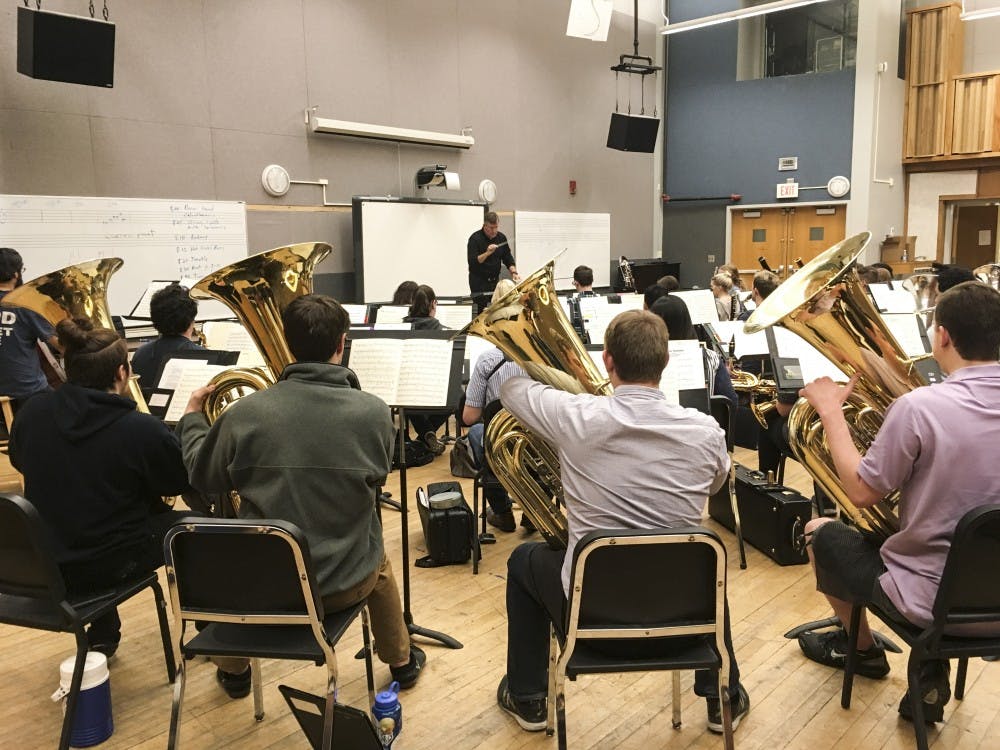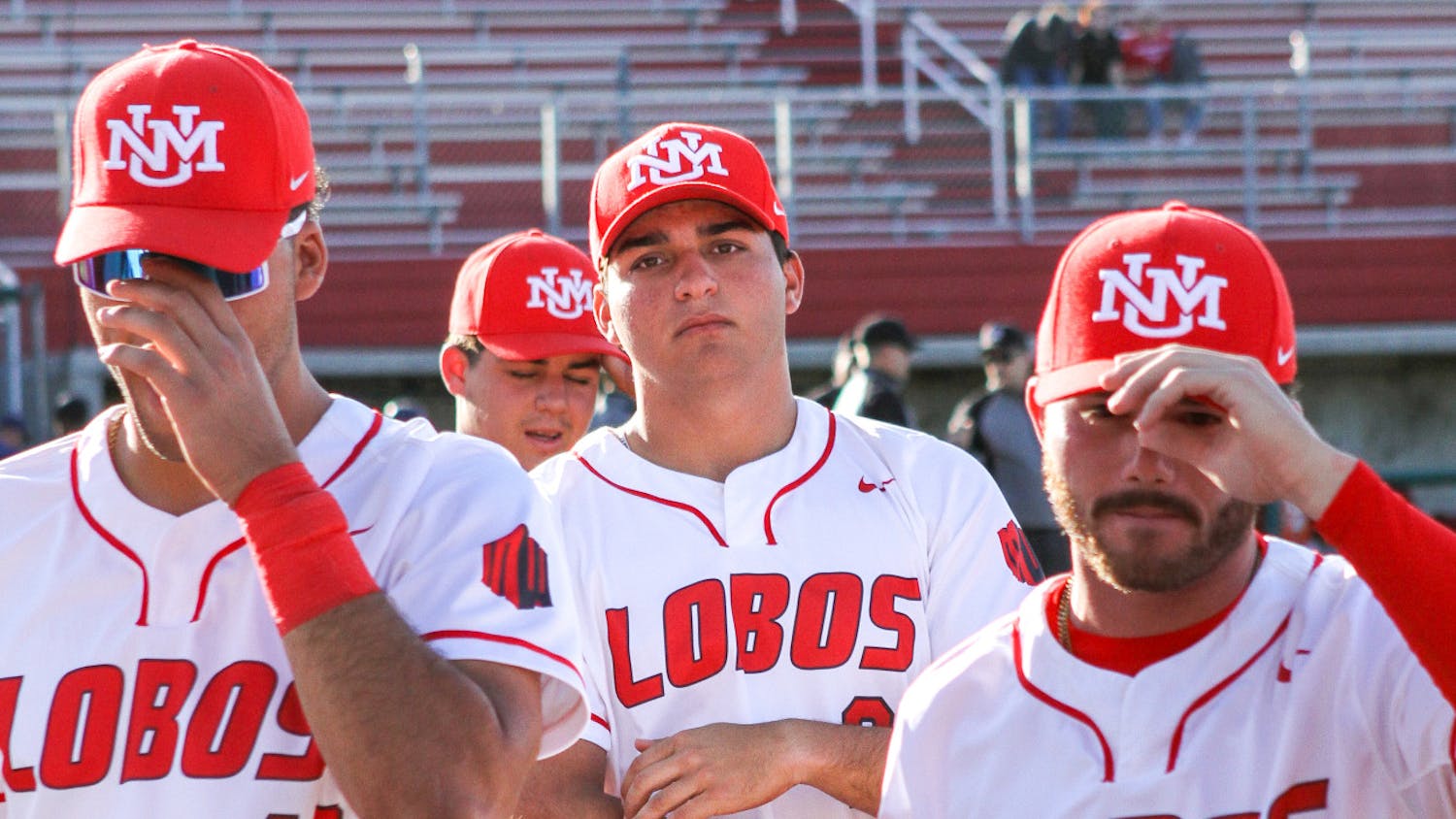The University of New Mexico Wind Symphony will be performing the concert, “Russians and Americans,” featuring Russian and American works on Wednesday at 7:30 p.m. in Popejoy Hall.
Performers pieced together the show in the first three weeks of the semester.
Professor of Music and Director of Bands Eric Rombach-Kendall hopes students can learn how to perform the music in a short period of time, he said.
“When they are professionals, they won’t have three weeks of rehearsal, which is what we’ve got for this performance,” Rombach-Kendall said. “They’ll have two or three rehearsals, four is a rarity, because of the money it costs to pay musicians for service.”
The first half of the program focuses on Russian-inspired works, kicking-off the concert with the “Overture to Colas Breugnon,” an opera composed by Dmitry Kabalevsky in 1938.
Katie Henderson, the symphony’s conducting teaching assistant, said, “It’s a love-hate relationship with the Kabalevsky. The overture is a blast to play, but it’s one of the hardest technical things that we’ve ever been given.”
U.K. composer Kenneth Hesketh’s 2002 “Diaghilev Dances” will follow. This piece of the production is similar to Stravinsky’s commissions for the “Ballet Russes: The Firebird, Petrushka and the Rite of Spring.”
“Anybody that is intimately familiar with Stravinsky’s ballets, they won’t hear any quotes, he does not borrow any materials from Stravinsky, but gestures, the colors, the atmosphere that it evoked is very much like a Stravinsky ballet,” Rombach-Kendall said.
Serge Diaghilev was the famous impresario that commissioned these ballets and started the touring ballet company. Although Hesketh is from the U.K., he conjures a Russian style in the work.
The first half is concluded with “The Slavic Woman’s Farewell,” written in 1912 by Vasily Agapkin, conducted by Henderson, written in honor of Slavic wives accompanying their husbands to war.
The American half of the concert starts off with John Philip Sousa’s New Mexico March, composed in 1928. The march is a piece that integrates New Mexican musical traditions.
The next piece that will be introduced is “Meditation at Lagunitas,” which was inspired by the Robert Hass poem of the same name. This work is the most recent composition, written in 2014.
Get content from The Daily Lobo delivered to your inbox
The pianist Morton Gould wrote the next piece, “Santa Fe Saga,” in 1956 in collaboration with choreographer Elliot Feld, which utilizes northern New Mexican folk elements. The concert will be brought to a close with Henry Fillmore’s “The Circus Bee.”
“There is so much great Russian music and great American Music, I thought, ‘Let’s do a concert that’s called Russians and Americans but show the positive side of things,’” Rombach-Kendall said.
Two of the four American pieces celebrate New Mexico.
Trumpet performance grad students in the Wind Symphony have a range of perspectives on the concert.
“The turnaround was quick but the music we are play is rather challenging technically,” said UNM student Emily Nastelin. “So (it) definitely took a few hours practicing individually before we could put it together.”
Despite the challenges, many students find the music rewarding.
Trumpeter and UNM student Tristan Frank said it is a “good mix of obviously different nationalities of music and different just types of music within those categories too.”
The “Overture to Colas Breugnon” features a common audition excerpt for xylophone that percussionist Darrin Hunsinger is happy to play.
“I love that we are playing orchestral music in Wind Symphony. I think it is really cool,” Hunsinger said.
Beyond teaching his students the music they will potentially perform throughout their careers, Rombach-Kendall also wants to provide opportunities for student soloists.
“When you have that many good players, you want to try to do things that allows individuals to shine...So the Wind Symphony is, in a lot of ways, just like an orchestra, without the strings. In the orchestra the winds play more of a solo role than the strings usually do, and so there is a lot of solo opportunity in the literature that we choose,” Rombach-Kendall said.
Aubrie Powell is a culture reporter at the Daily Lobo. She can be contacted at culture@dailylobo.com or on Twitter @AubrieMPowell.






